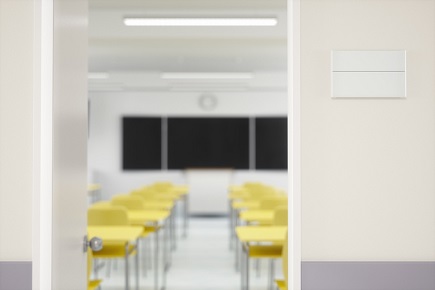
Reports show that Australia’s population is surging, with the majority of growth concentrated in established inner-urban suburbs of the nation’s capital cities.
Increasingly, Australian families with school-age children are residing in these crammed suburbs and moving to apartment-style dwellings close to major inner-city employment hubs.
However, one expert says inner-urban areas simply don’t have the land capacity to accommodate schools in traditional horizontal configurations and that in response to this issue, vertical schools are increasingly becoming a viable solution to meet the educational demands within these communities.
Robin Sweasey, director of project management at UK services company, Turner & Townsend, said the increase in population density in urban locations and land scarcity has caused a “significant escalation” in the rise of vertical school projects, either in planning or under development, in major Australian capital cities.
“Vertical schools are characterised as multi-level buildings blending teaching pedagogies and age cohorts across science, technology, engineering, arts and maths (STEAM) disciplines,” Sweasey said.
Sweasey pointed out that a notable increase in significant high-rise school projects has occurred within the past three years in Australia.
“Globally, vertical schools are a relatively new concept. Australia is therefore well positioned to pioneer a new concept of innovative education delivery within a vertical environment,” she said.
Sweasey said STEAM disciplines all require flexible and adaptive learning spaces that can accommodate rapid changes in technology-enabled learning.
“Play and sports facilities, both indoor and outdoor, are necessary for all age groups. Amenities such as canteens foster interaction and engagement amongst students and staff,” she said.
“The use of stairways rather than lifts facilitates efficient movement between levels to maximise learning time whilst promoting healthy activity levels.”
Sweasey added that effective interaction with adjoining community, commercial, retail and cultural activities can also help create a hub and social environment across age cohorts and demographics, both before and after school hours.
Linking communities in the 21st century
Sweasey said that for many decades in Australia’s rural areas, schools were the heart of the community with road networks and facilities built around them to foster interaction and social engagement.
“Today, there are parallels which can be drawn with the positioning of vertical schools in city areas. Schools facilitate important social links and cohesion within and between communities,” she said.
“Urban land areas with high-rise dwellings are servicing the needs of dense populations in small areas. Vertical schools, strategically integrated within these zones play a crucial role in strengthening the social fabric of the community.”
Sweasey said Australia is considered a thriving multi-cultural nation and that schools can be “a catalyst for diverse cultures to cohabitate in a unified learning environment”.
“If modern educational facilities are provided in city areas, families from various nationalities and backgrounds will consider them viable, liveable alternatives,” she said.
Sweasey pointed out that there is a growing demand for school-age students to learn collaborative, flexible and interactive problem-solving skillsets to equip them for the societal challenges they will face in adult life.
“School facilities need to adapt and reflect these changes,” she said, adding that vertical schools are “an ideal solution to meet the ever-shifting needs of communities whilst generating social cohesion”.
“[Vertical schools] are set to revolutionise learning in the 21st century as a new paradigm to accommodate expanding inner-city populations. Australia has an extraordinary opportunity to be at the forefront of globally innovative education delivery through its willingness to embrace the vertical school concept.”


